Abstract
Six adult pedigreed dogs were studied as long as 3 yr in order to determine the effects of cholesterol feeding and of bile diversion on absorption, synthesis, and storage of cholesterol. These measurements were based on cholesterol balance and isotope kinetic studies.
In the six dogs fed a “cholesterol-free” diet with their enterohepatic circulations undisturbed, the rate of cholesterol synthesis ranged from 225 to 508 mg/day (mean 325 mg/day or 12.4 mg/kg/day). In two dogs studied subsequently on cholesterol-containing diets, absorption of cholesterol averaged 81% (range 71-94%) on a dietary intake of 0.5 g/day; on high cholesterol intakes (2.7-3.0 g/day) the rate of absorption dropped to 43-51% of daily intake, but the absolute amounts absorbed were increased. Feeding of cholesterol resulted in acceleration of bile acid formation and excretion, as well as nearly total inhibition of cholesterol synthesis. These two compensatory mechanisms were sufficient to maintain zero balance of cholesterol in the face of a high cholesterol intake. Plasma cholesterol concentrations in the two dogs increased by 37 and 44%.
In two other dogs bile was completely diverted into the urinary system for nearly 2 yr. When these dogs were studied on a cholesterol-free diet, the sum of acidic steroids excreted daily in urine plus neutral steroids excreted in feces was seven times as high as before the operation. Since these massive excretory losses could not have been sustained by mobilization from tissue cholesterol pools, and since the rate of disappearance of [4-14C]cholesterol from the plasma after single intravenous injection was greatly increased after complete biliary diversion, total daily synthesis of cholesterol must have been greatly accelerated, for synthesis was totally unsuppressed. The increased output of fecal neutral steroids could be the result of transfer of plasma cholesterol across the gut wall or due to increased synthesis in the gut. Plasma cholesterol levels were reduced in these two dogs by 20 and 27%, and triglycerides decreased by 36 and 43%.
Accumulation of cholesterol in body pools in the cholesterol-fed dogs appeared to have been prevented, according to antemortem measurements: increased absorption of dietary cholesterol was exactly balanced by suppression of cholesterol synthesis and enhanced bile acid excretion. In the bile-shunted animals, depletion of tissue stores of cholesterol could not be predicted by antemortem measurements.
Full text
PDF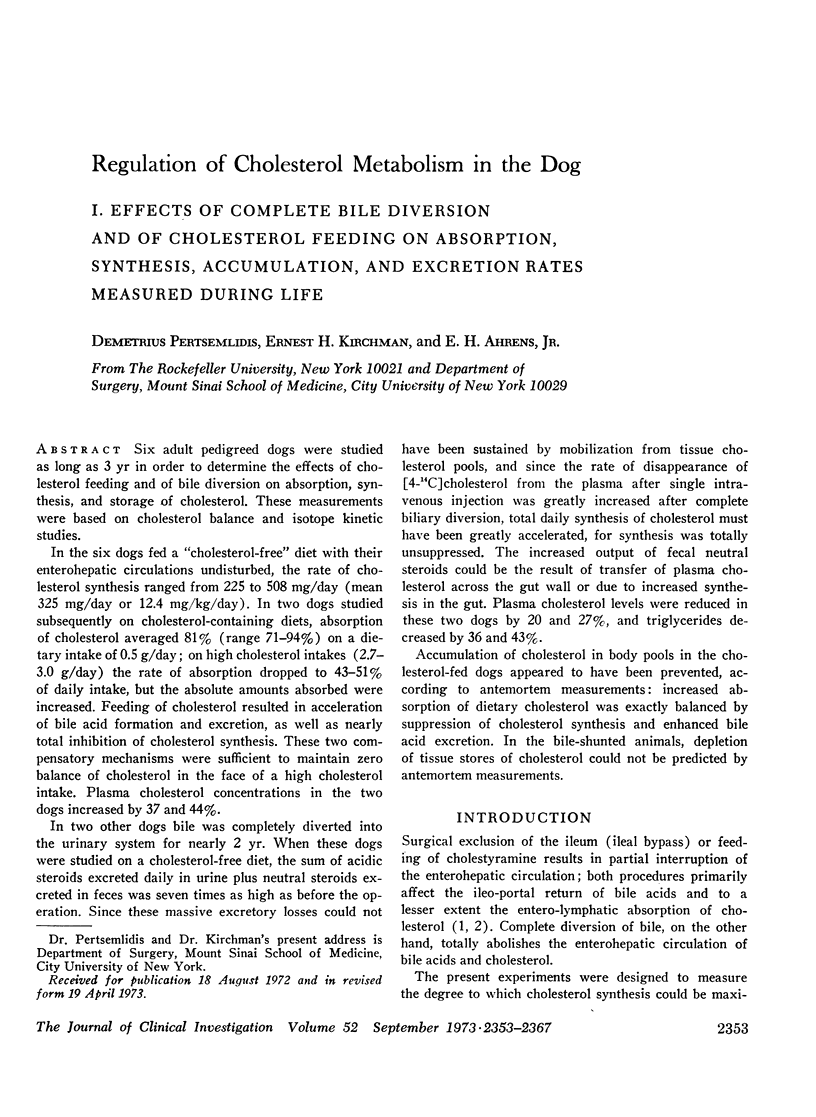
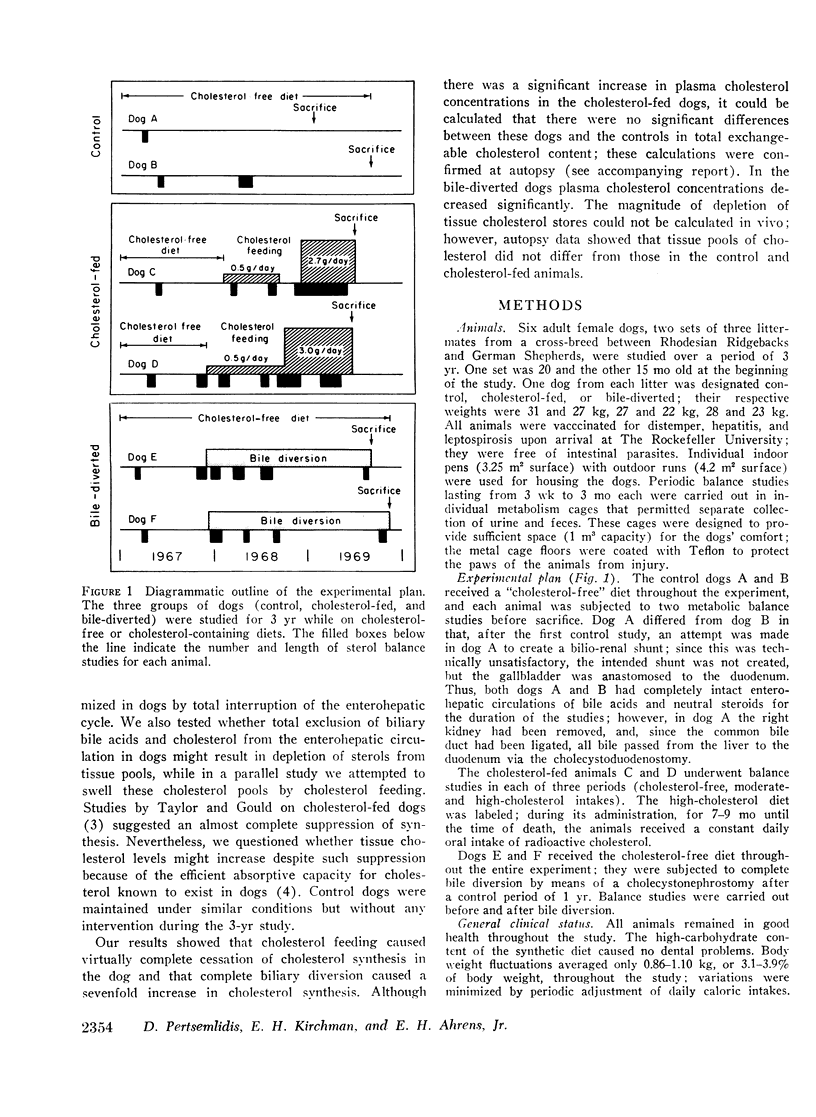
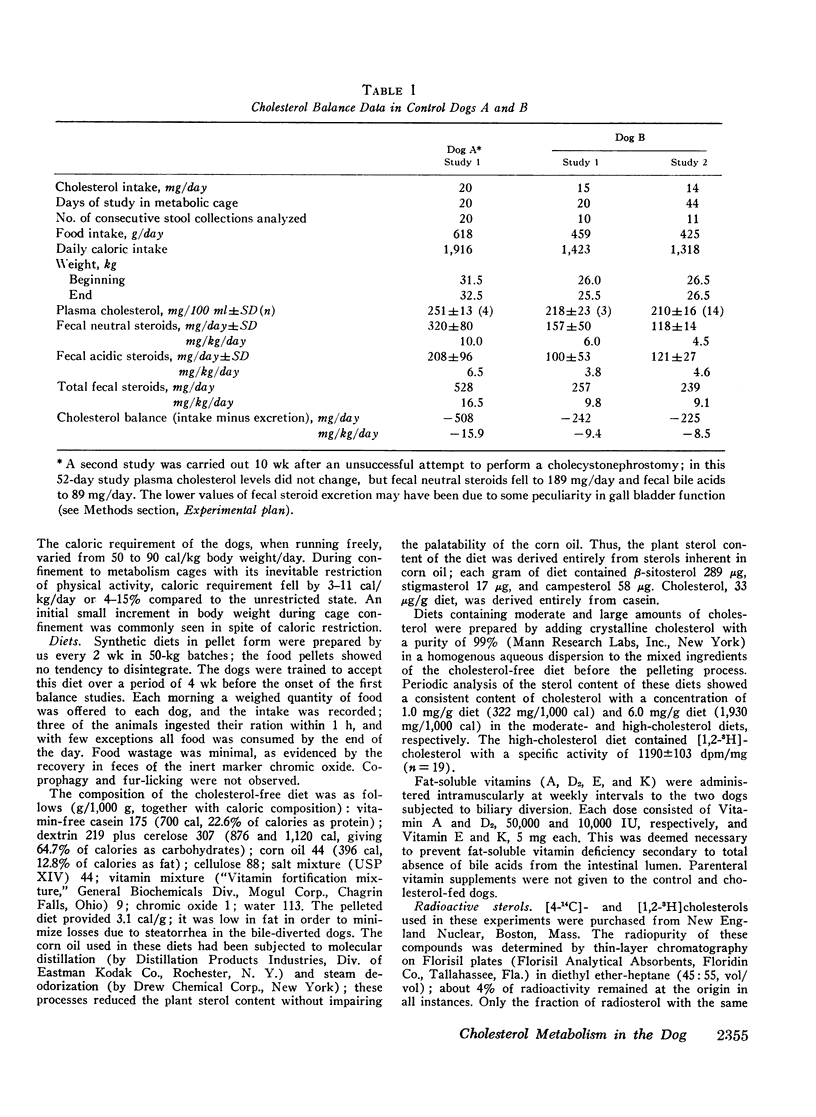
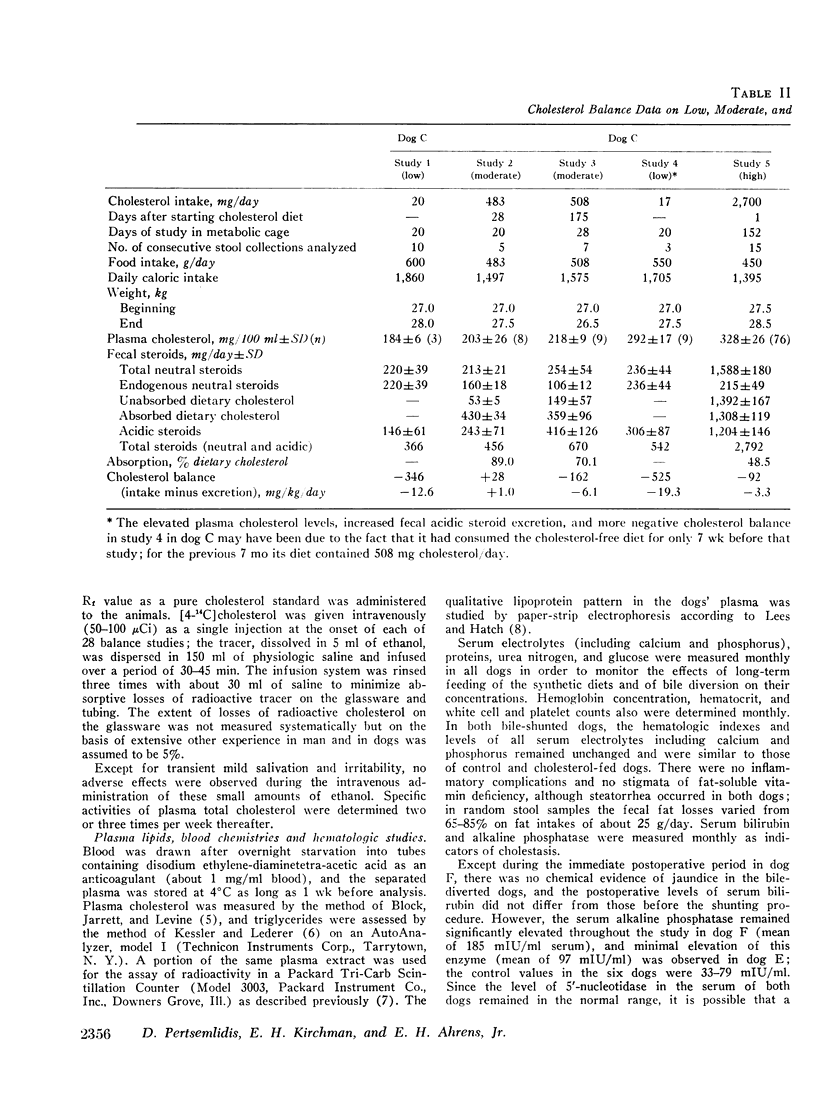
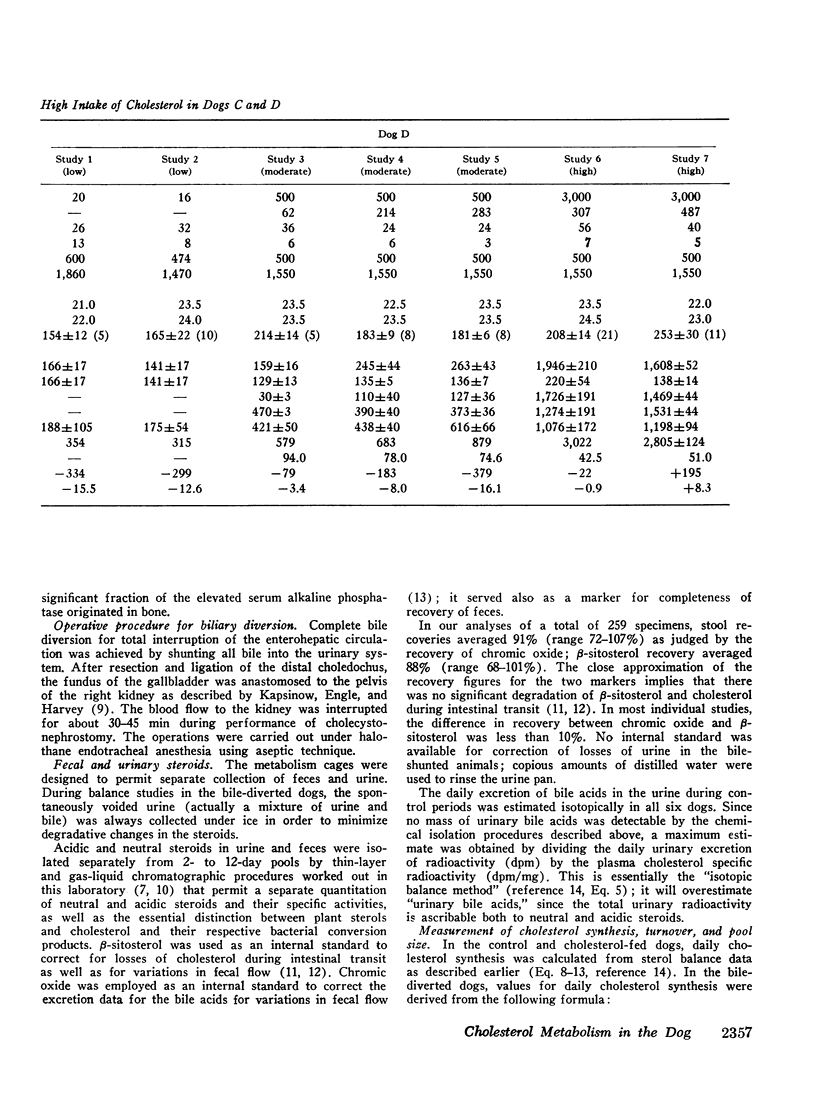
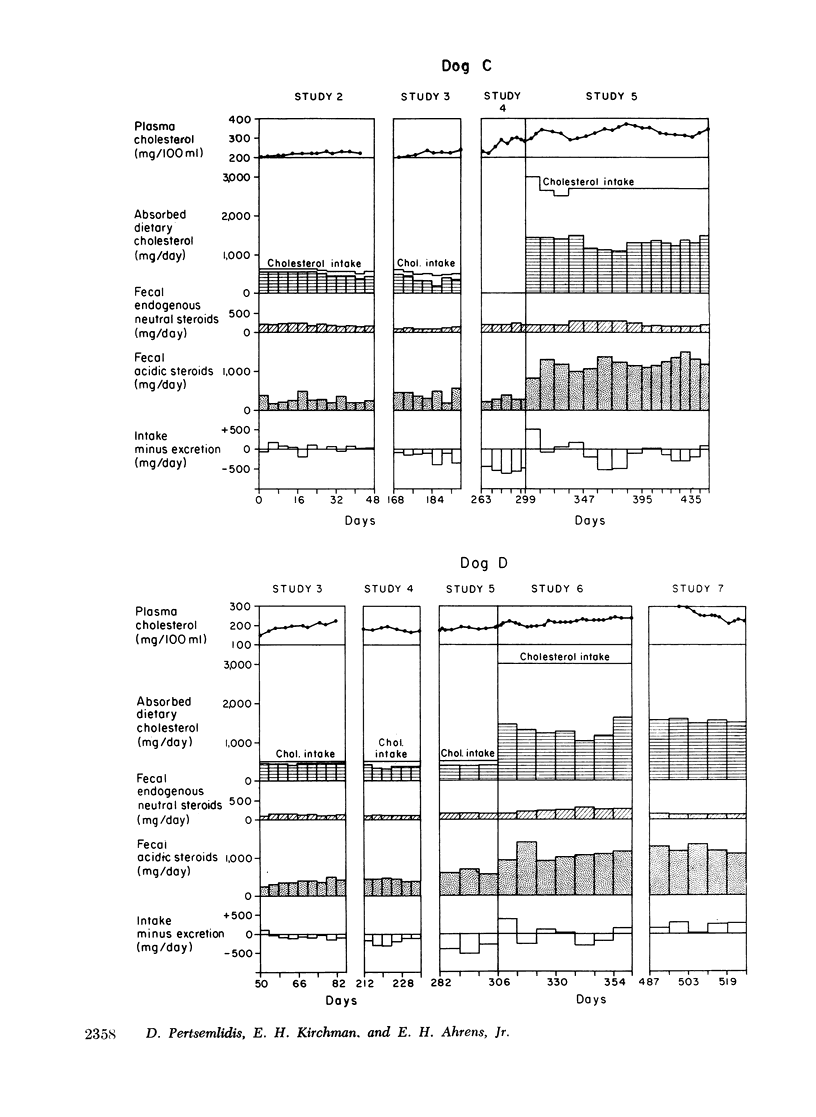
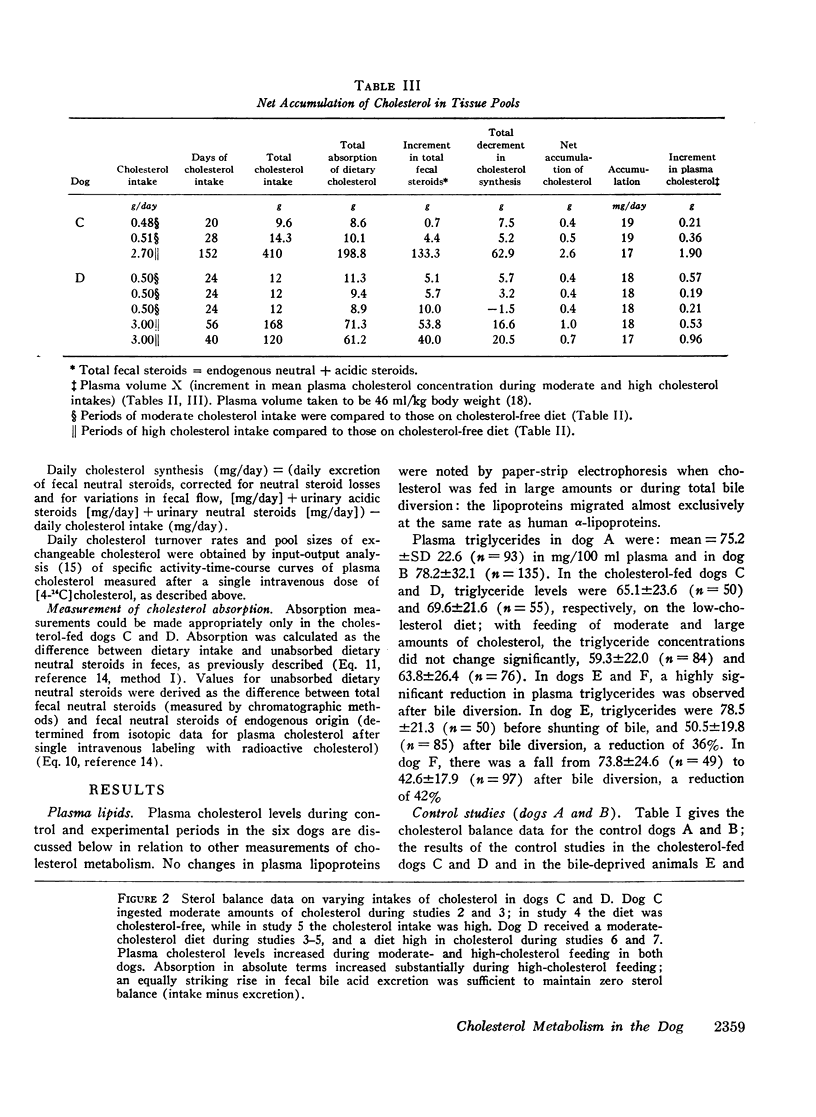
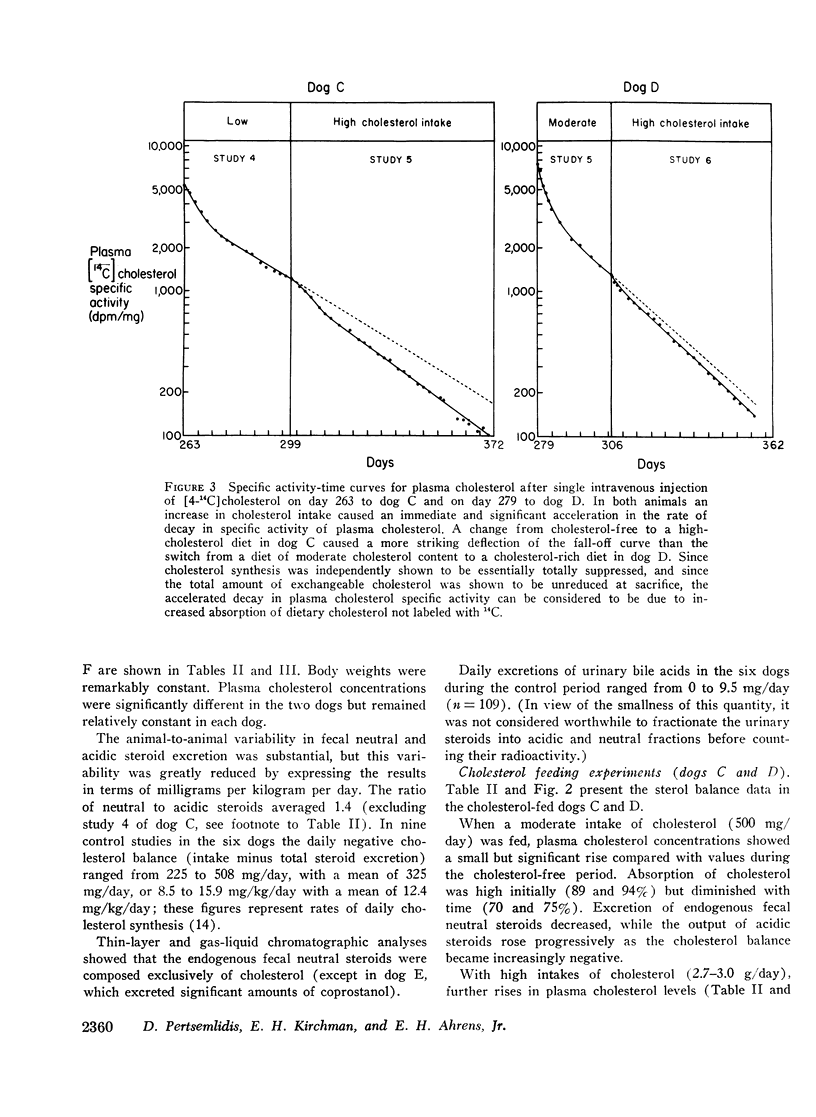
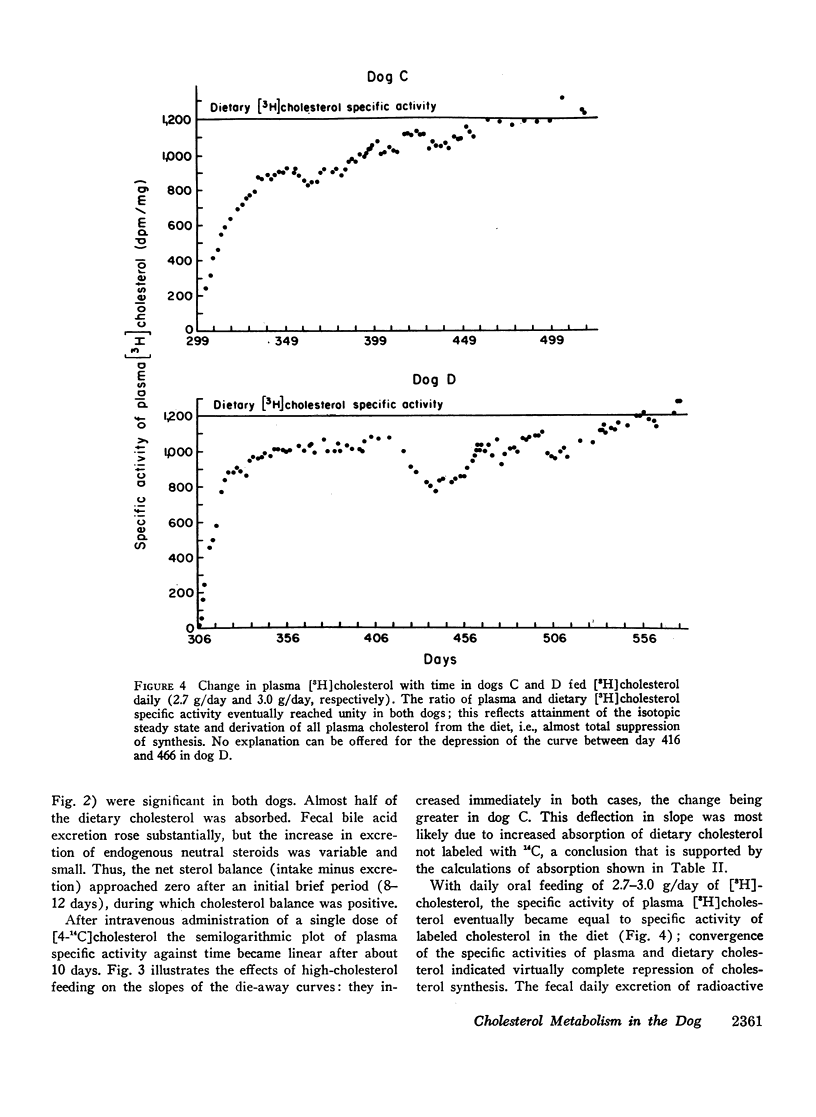
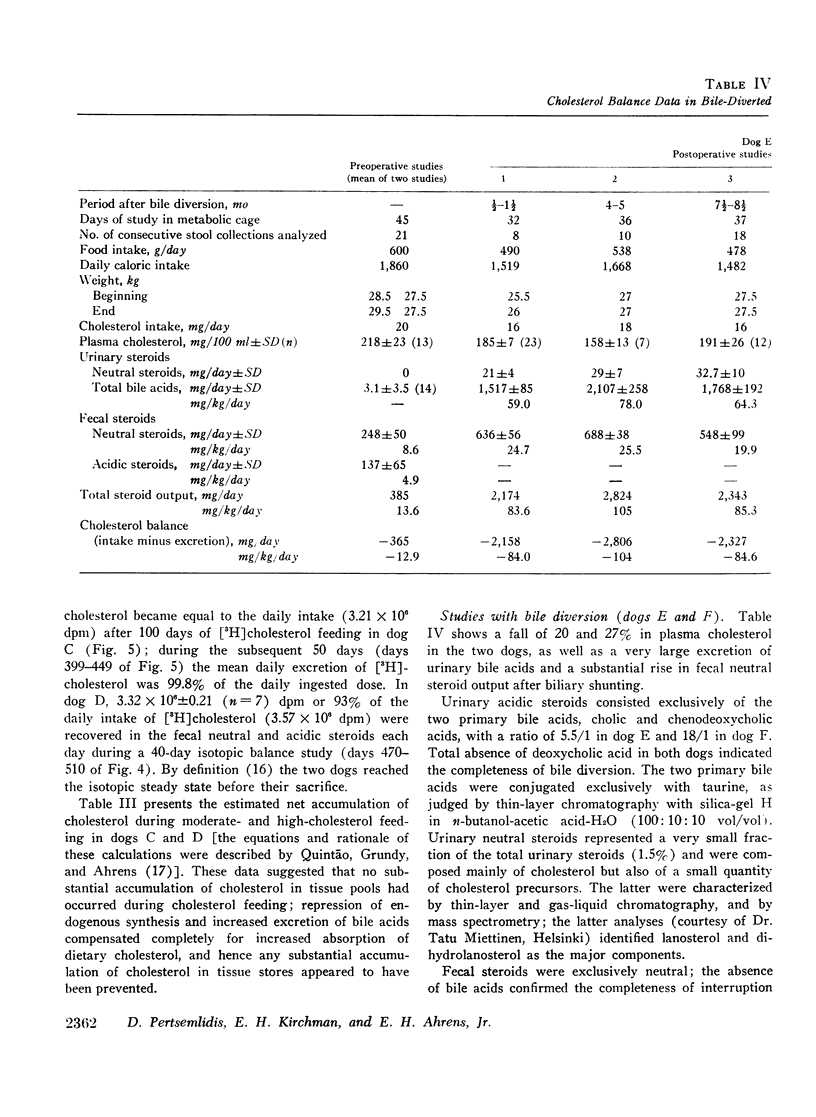
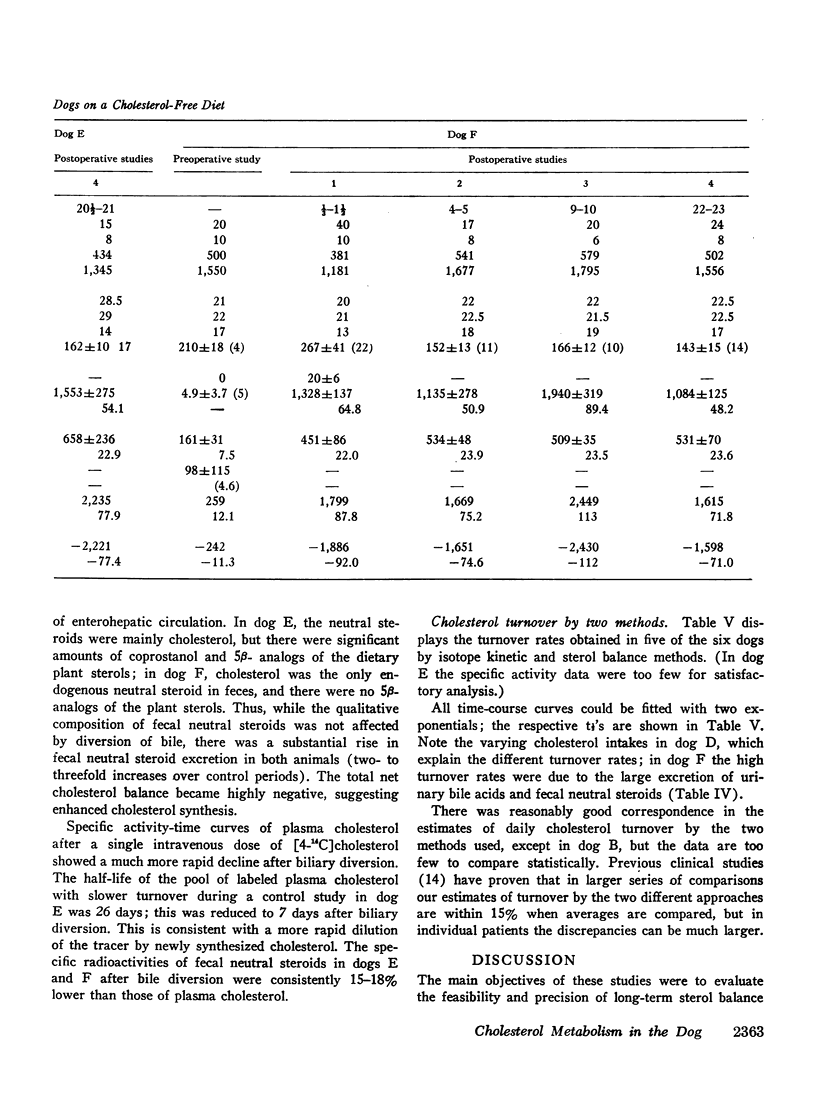
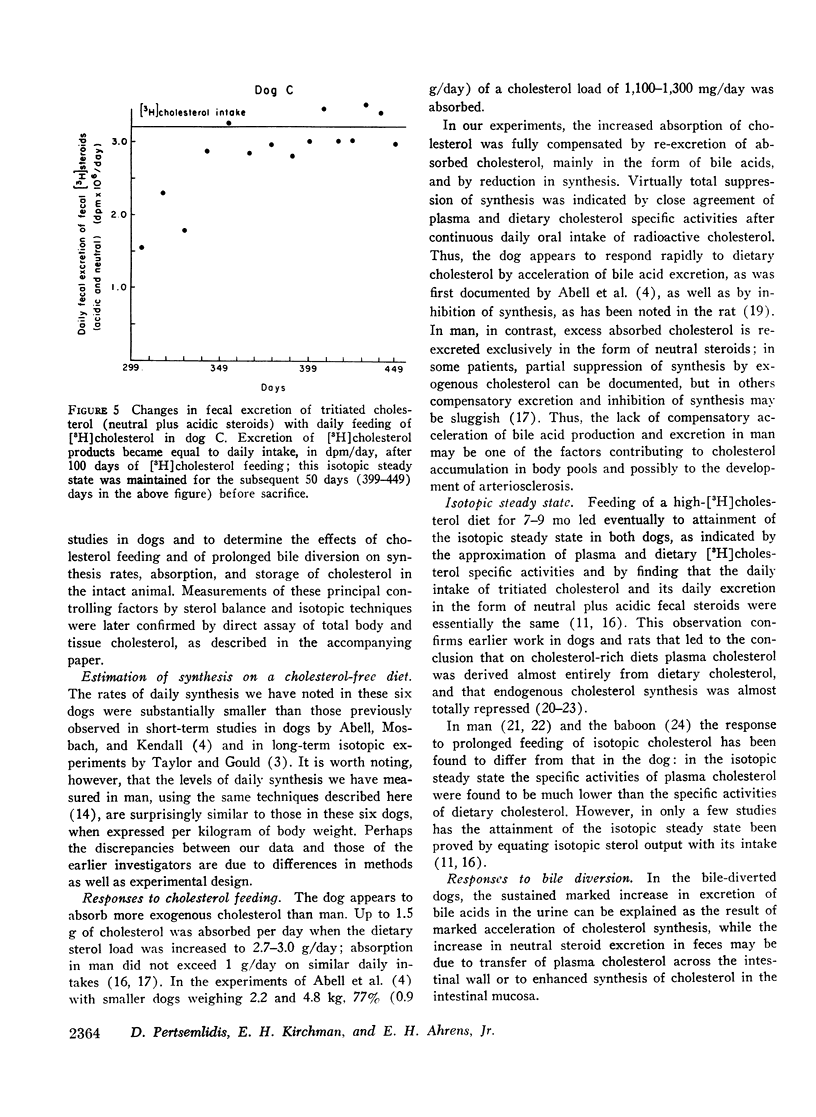
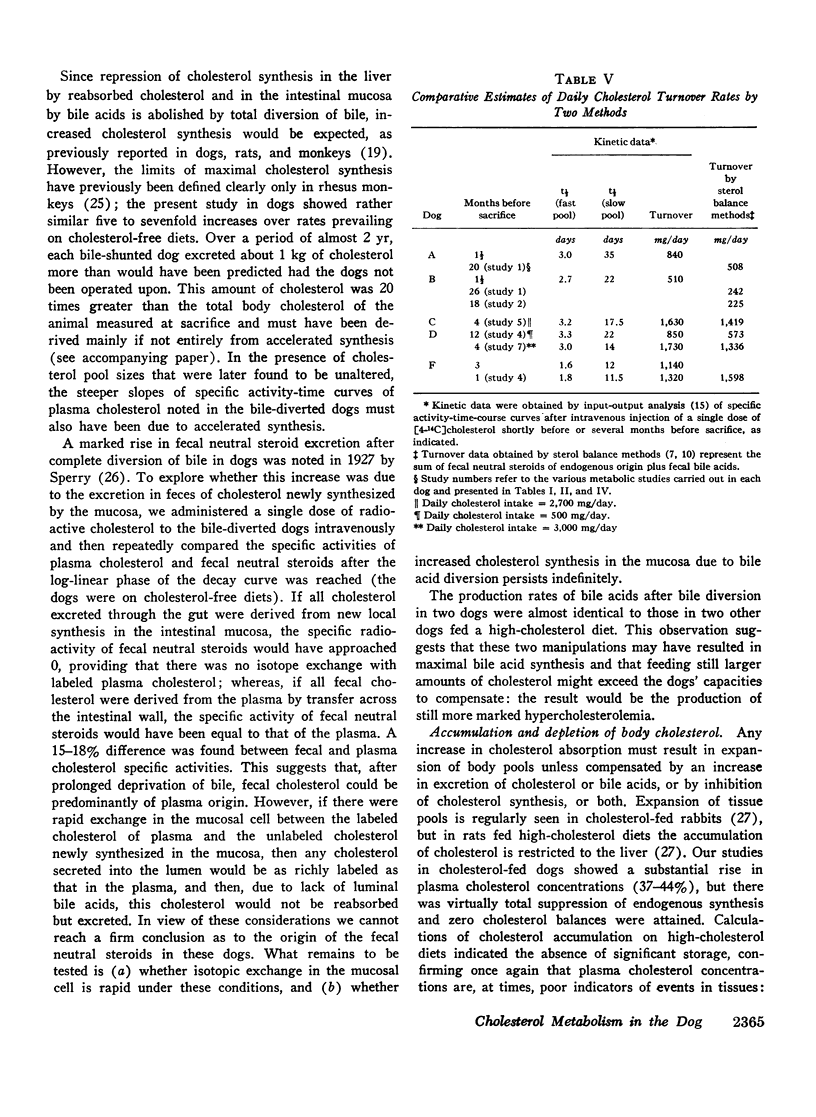
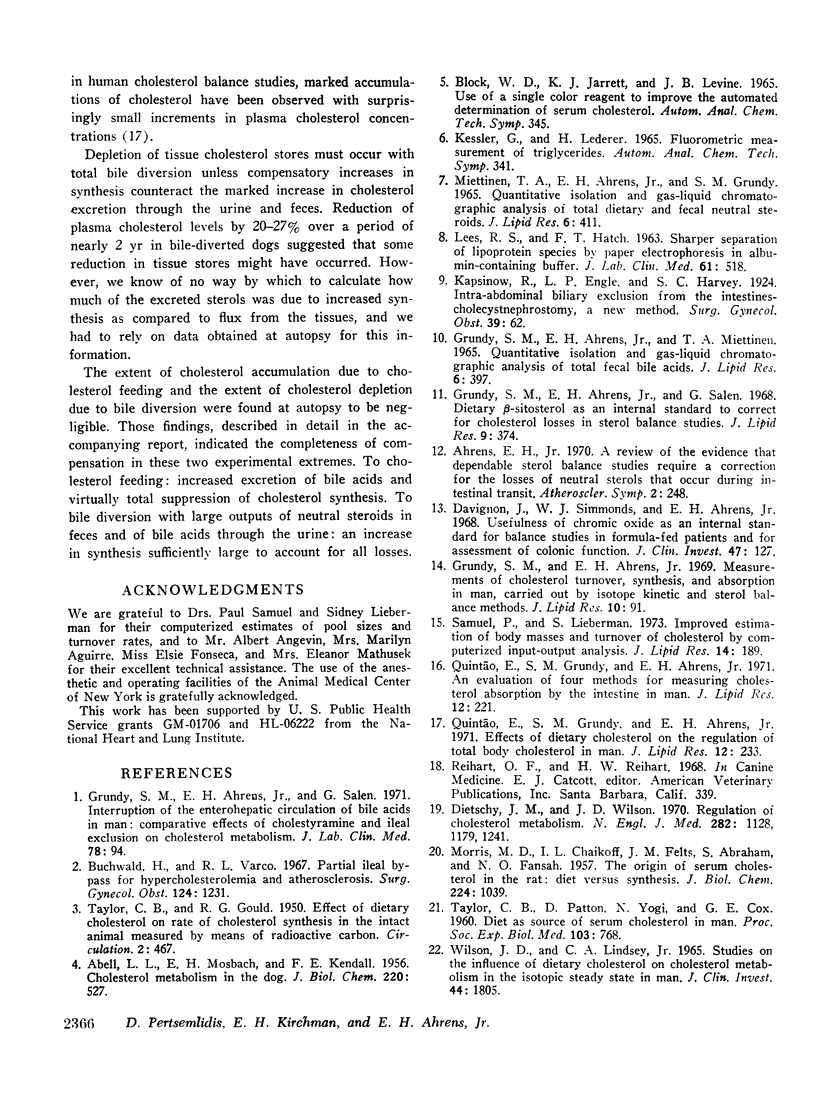
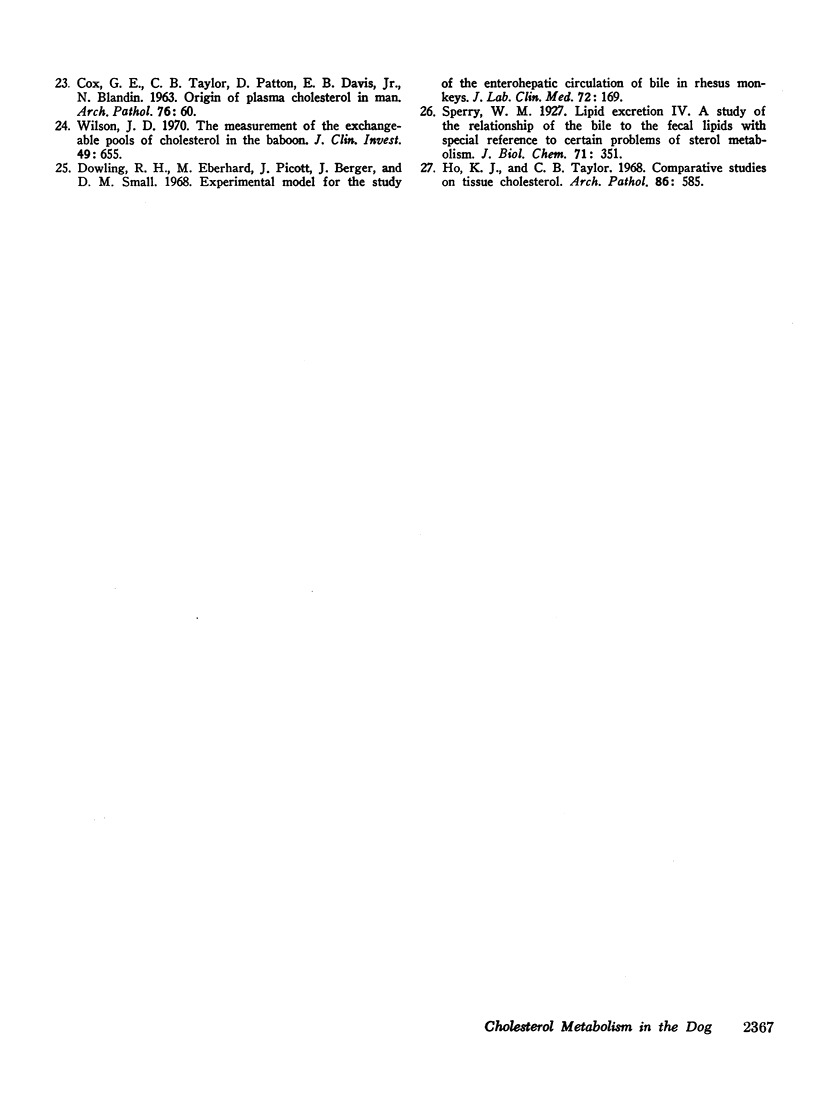
Selected References
These references are in PubMed. This may not be the complete list of references from this article.
- ABELL L. L., MOSBACH E. H., KENDALL F. E. Cholesterol metabolism in the dog. J Biol Chem. 1956 Jun;220(2):527–536. [PubMed] [Google Scholar]
- Buchwald H., Varco R. L. Partial ileal bypass for hypercholesterolemia and atherosclerosis. Surg Gynecol Obstet. 1967 Jun;124(6):1231–1238. [PubMed] [Google Scholar]
- Davignon J., Simmonds W. J., Ahrens E. H. Usefulness of chromic oxide as an internal standard for balance studies in formula-fed patients and for assessment of colonic function. J Clin Invest. 1968 Jan;47(1):127–138. doi: 10.1172/JCI105703. [DOI] [PMC free article] [PubMed] [Google Scholar]
- Dietschy J. M., Wilson J. D. Regulation of cholesterol metabolism. I. N Engl J Med. 1970 May 14;282(20):1128–1138. doi: 10.1056/NEJM197005142822005. [DOI] [PubMed] [Google Scholar]
- GRUNDY S. M., AHRENS E. H., Jr, MIETTINEN T. A. QUANTITATIVE ISOLATION AND GAS--LIQUID CHROMATOGRAPHIC ANALYSIS OF TOTAL FECAL BILE ACIDS. J Lipid Res. 1965 Jul;6:397–410. [PubMed] [Google Scholar]
- Grundy S. M., Ahrens E. H., Jr Measurements of cholesterol turnover, synthesis, and absorption in man, carried out by isotope kinetic and sterol balance methods. J Lipid Res. 1969 Jan;10(1):91–107. [PubMed] [Google Scholar]
- Grundy S. M., Ahrens E. H., Jr, Salen G. Dietary beta-sitosterol as an internal standard to correct for cholesterol losses in sterol balance studies. J Lipid Res. 1968 May;9(3):374–387. [PubMed] [Google Scholar]
- Grundy S. M., Ahrens E. H., Jr, Salen G. Interruption of the enterohepatic circulation of bile acids in man: comparative effects of cholestyramine and ileal exclusion on cholesterol metabolism. J Lab Clin Med. 1971 Jul;78(1):94–121. [PubMed] [Google Scholar]
- Ho K. J., Taylor C. B. Comparative studies on tissue cholesterol. Arch Pathol. 1968 Dec;86(6):585–596. [PubMed] [Google Scholar]
- LEES R. S., HATCH F. T. Sharper separation of lipoprotein species by paper electrophoresis in albumin-containing buffer. J Lab Clin Med. 1963 Mar;61:518–528. [PubMed] [Google Scholar]
- MIETTINEN T. A., AHRENS E. H., Jr, GRUNDY S. M. QUANTITATIVE ISOLATION AND GAS--LIQUID CHROMATOGRAPHIC ANALYSIS OF TOTAL DIETARY AND FECAL NEUTRAL STEROIDS. J Lipid Res. 1965 Jul;6:411–424. [PubMed] [Google Scholar]
- MORRIS M. D., CHAIKOFF I. L., FELTS J. M., ABRAHAM S., FANSAH N. O. The origin of serum cholesterol in the rat; diet versus synthesis. J Biol Chem. 1957 Feb;224(2):1039–1045. [PubMed] [Google Scholar]
- Quintão E., Grundy S. M., Ahrens E. H., Jr An evaluation of four methods for measuring cholesterol absorption by the intestine in man. J Lipid Res. 1971 Mar;12(2):221–232. [PubMed] [Google Scholar]
- Quintão E., Grundy S. M., Ahrens E. H., Jr Effects of dietary cholesterol on the regulation of total body cholesterol in man. J Lipid Res. 1971 Mar;12(2):233–247. [PubMed] [Google Scholar]
- Samuel P., Lieberman S. Improved estimation of body masses and turnover of cholesterol by computerized input--output analysis. J Lipid Res. 1973 Mar;14(2):189–196. [PubMed] [Google Scholar]
- TAYLOR C. B., PATTON D., YOGI N., COX G. E. Diet as source of serum cholesterol in man. Proc Soc Exp Biol Med. 1960 Apr;103:768–772. doi: 10.3181/00379727-103-25664. [DOI] [PubMed] [Google Scholar]
- Wilson J. D., Lindsey C. A., Jr Studies on the influence of dietary cholesterol on cholesterol metabolism in the isotopic steady state in man. J Clin Invest. 1965 Nov;44(11):1805–1814. doi: 10.1172/JCI105288. [DOI] [PMC free article] [PubMed] [Google Scholar]


